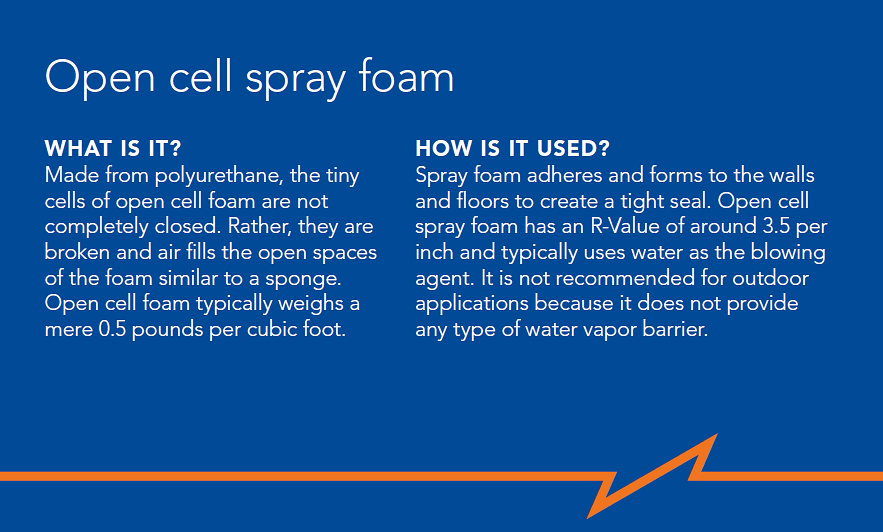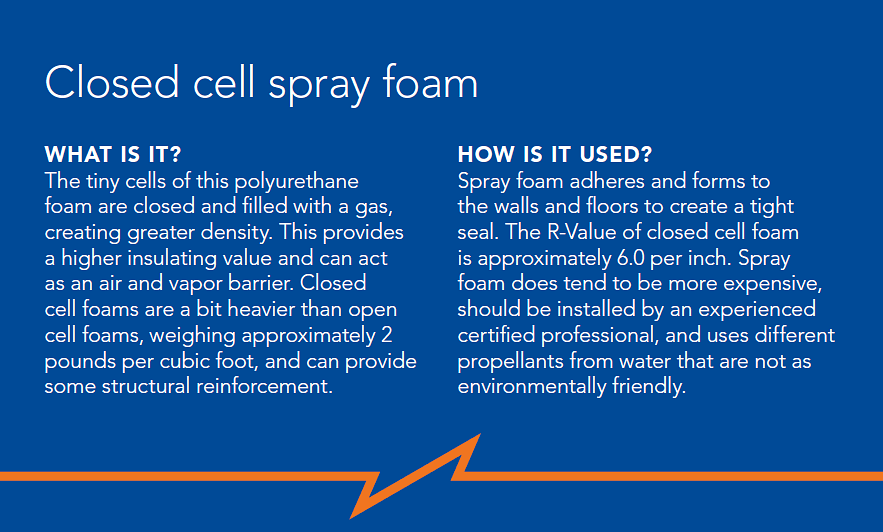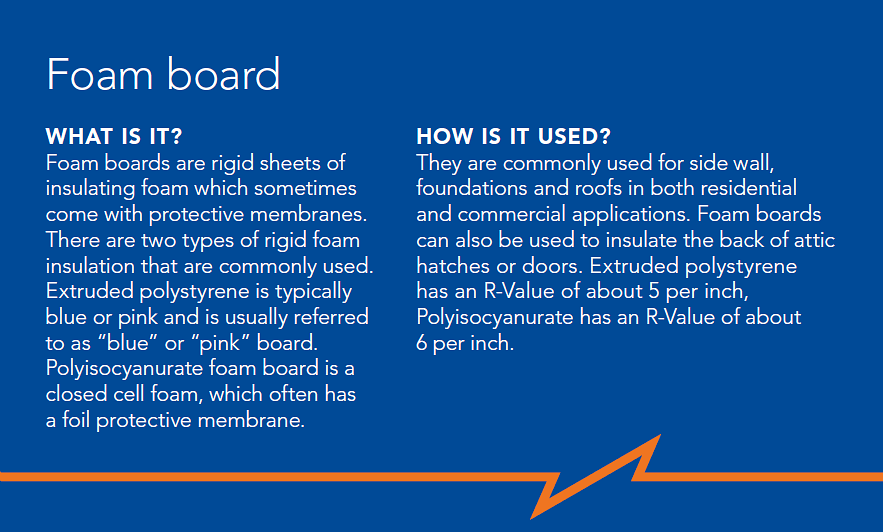Energy Efficiency: Home Insulation
Use the navigation arrows or swipe (touchscreen) to view the displays for this area.
-
Seal and Insulate
Sealing and insulating the "envelope" or "shell" of your home can save up to 20% on heating and cooling costs.
Most homes in the U.S. don't have enough insulation and have significant air leaks. In fact, if you added up all the leaks, holes and gaps in a typical home's envelope, it would be the equivalent of having a window open every day of the year!
A tighter home can provide improved energy efficiency, air quality and comfort by reducing unwanted drafts, moisture, noise, and the escape of conditioned air.
Air Infiltration and Exfiltration
Air infiltration, or leakage, occurs when outside air leaks into homes. Conditioned air (heated or cooled) that leaks outside is called exfiltration. Air infiltration can account for 30-40% of heating and cooling energy usage. Sealing gaps around your home's outer walls, windows, doors, plates and vents can significantly reduce filtration.
Insulation and the value of R
Insulation levels are specified by R-Value, which is a measure of insulation's ability to resist heat flow. The higher the R-Value, the better the thermal performance of the insulation. R-values are additive. If, for example, a ceiling requires R-38 insulation, two layers of R-19 batts or rolls can be used.
Keep in mind that R-Values apply to new insulation tested in laboratory conditions. If the insulation in your home is damaged or incorrectly installed, the R-Value is reduced.
-

Cellulose
What is it?
Cellulose insulation is typically made from recycled newspaper and reconstituted wood pulp. The material is treated with Borate, a naturally occurring mineral compound, which provides fire, moisture, mold and vermin protection.
How is it used?
Cellulose insulation can be installed in a variety of ways. It can be blown under pressure into an enclosed wall cavity or underneath floorboards. In open attics, loose cellulose can be blown into open spaces to provide effective insulation protection. Cellulose can be used for new construction and to retrofit older construction.
Cellulose insulation provides excellent thermal resistance with an R-Value of approximately 3.5 per inch, and helps sound proof the wall and greatly slows air flow.
-

Open cell spray foam
What is it?
Made from polyurethane, the tiny cells of open cell foam are not completely closed. Rather, they are broken and air fills the open spaces of the foam similar to a sponge. Open cell foam typically weighs a mere 0.5 pounds per cubic foot.
How is it used?
Spray foam adheres and forms to the walls and floors to create a tight seal. Open cell spray foam has an R-Value of around 3.5 per inch and typically uses water as the blowing agent. It is not recommended for outdoor applications because it does not provide any type of water vapor barrier.
-

Closed cell spray foam
What is it?
The tiny cells of this polyurethane foam are closed and filled with a gas, creating greater density. This provides a higher insulating value and can act as an air and vapor barrier. Closed cell foams are a bit heavier than open cell foams, weighing approximately 2 pounds per cubic foot, and can provide some structural reinforcement.
How is it used?
Spray foam adheres and forms to the walls and floors to create a tight seal.16 The R-value closed cell foam is around 6.0 per inch. Spray foams do tend to be more expensive, should be installed by experienced professional, and uses different propellants from water that are not as environmentally friendly.
-

Fiberglass
What is it?
Fiberglass is a traditional form of building insulation. Commonly found in blanket form, called batts, it is available in bags containing standard pre-cut lengths and widths.
How is it used?
In walls, batts can be stapled into place. It also comes in bags as loose fill that can be blown into attic, wall and floor cavities. Most fiberglass batts are manufactured with a paper backing that faces towards the inside of the home (in heating dominated climates like Connecticut).
Be careful not to pack the batts tightly into gaps or under things as compressing the insulation makes it less effective and reduces the R-Value
-

Foam Board
What is it?
Foam boards are rigid sheets of insulating foam which sometimes come with protective membranes. There are two types of rigid foam insulation that are commonly used. Extruded polystyrene is typically blue or pink and is usually referred to as "blue" or "pink" board. Polyisocyanurate foam board is a closed cell foam, which often has a foil protective membrane.
How is it used?
They are commonly used for side wall, foundations and roofs in both residential and commercial applications. Foam boards can also be used to insulate the back of attic hatches or doors. Extruded polystyrene has an R-Value of about 5 per inch, Polyisocyanurate has an R-Value of about 6 per inch.
-

Insulation Do's and Dont's
Don't...
assume your home has adequate insulation. Measuring is the only way to find out its R-value.
Do...
check your attic's level of insulation. If the insulation is at or below the level of the joists, add more insulation.
Do...
add extra insulation to bring it up to recommended R-levels.
Do...
remove damaged insulation. Wet or compressed insulation has no value for keeping your home warm. Replace it with new insulation.
Do...
seal air leaks before adding insulation.
Don't...
install insulation without repairing water leaks. Make sure the roof and any pipes are in good condition. Water logged insulation has no insulation value.
Don't...
block soffit and gable vents when initially insulating or adding insulation to your attic. Good air flow is critical to preventing condensation.
Do...
wear proper protective equipment. Wear a mask, gloves, goggles, long sleeves and long pants to protect against fiberglass cuts on the skin.
Don't...
stand on the joists when installing insulation. One wrong step and you can fall through the ceiling. Use planks or plywood to stand on and move them around as needed.
-

Wind Baffles
For effective attic ventilation, air needs to flow freely from the soffit vents and exit at the ridge vents. Installing wind baffles or another form of air barrier in the eave bays of roof assemblies that contain soffit vents will help prevent wind from blowing through fibrous insulating materials at the eaves.

- Energy Efficiency: Home Insulation
:
- Seal and Insulate
- Cellulose
- Open Cell Spray Foam
- Closed Cell Spray Foam
- Fiberglass
- Foam Board
- Insulation Do's and Dont's
- Wind Baffles
- Energy is All Around Us »
- Energy Basics: What is Energy? »
- Energy Basics: Sources of Energy »
- Energy Basics: Energy Pathways »
- Energy Basics: Electricity generation, transmission and distribution »
- Energy Efficiency: Why is it Important? »
- Energy Efficiency: In Your Home »
- Energy Efficiency: Lighting »
- Energy Efficiency: Kitchen »
- Energy Efficiency: Basement »
- Energy Assessment »
- Sustainable Business »
- Electricity in Connecticut »
- In Your Community »
